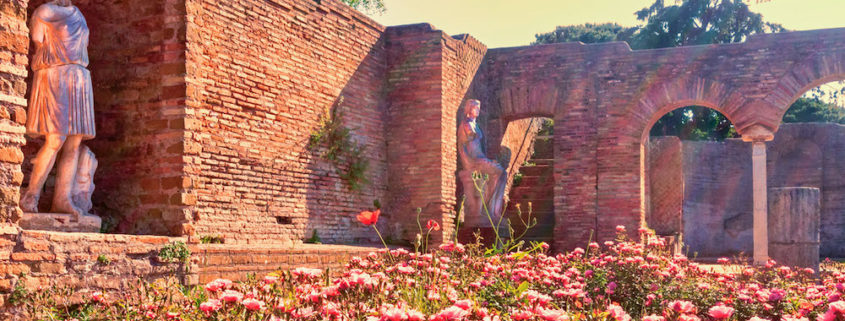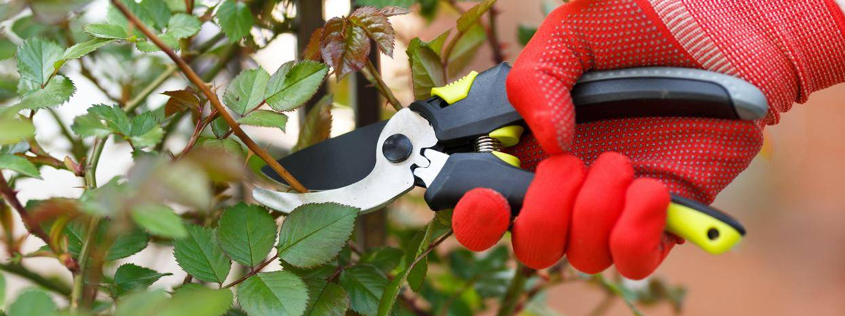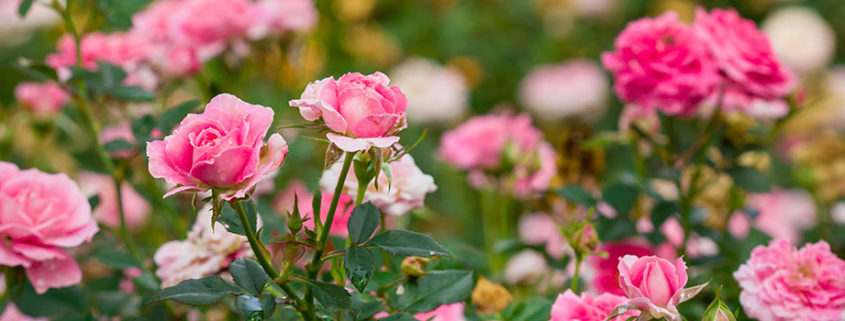For the homeowner who enjoys gardening, an immense amount of satisfaction can come from growing roses.
Regardless of individual preferences, roses offer something for everyone.
They can be found in every color, shape and size imaginable.
Roses can be used in landscape designs ranging from casual to extremely formal.
Enjoyment of roses does not end in the garden, either.
Cut rose arrangements from one’s own garden can spice up a room’s décor and impress visitors to the home.
Contrary to widely held beliefs, it is not necessary to be an expert to grow impressive roses.
Admittedly, more elegant roses like the hybrid teas take extra care, but they too can be grown successfully by anyone who has an interest in them.
Fortunately, although the degree of maintenance varies with the species selected, general rules for rose care apply across the different groups.
Some research on the correct planting and care of roses prior to purchasing will be immensely helpful to the home gardener’s long-term success.
In our last blog, we reviewed the attributes of roses in most of the major groups of modern roses.
Don’t worry if you missed it, you can find it here.
Several good web articles, rose books and reference manuals are available that detail the qualities and disadvantages of each group, along with pictures of numerous individual varieties. Keep in mind, however that rose selection is only the first step to successful rose growing.
Choosing the proper location, and correctly preparing the planting bed, will have a great impact on the future success of the roses.
Practically all roses like full sun. Select a location that has at least morning to mid-day sun. Roses need good air movement, too.
It is best not to box them in between buildings, walls, hills, or trees and shrubs. In the latter example, these other landscape plants can compete with the roses for both water and nutrients.
Roses like to be well watered, but the planting bed must drain well for roses to thrive. Building a raised bed or planting in a high location is the best way to insure good drainage.
If this is not feasible, putting a drain line blanketed in gravel is an option. In many areas, of course, the native soil drains sufficiently well that there is no problem.
If there is any doubt, fill the hole with water before planting to see how well it drains. Most of the water should be gone in a few hours. If it is not, then something additional needs to be done regarding drainage.
For the novice rose grower, it is recommended that container roses be selected instead of bare-root roses. It is easier to see what you are getting, and they are easier to establish after planting as well. Still, extreme care should be taken when moving the plant from the container to the planting hole. If the roots are not mature enough to hold the root ball tightly together, be prepared to cut the bottom from the container. Then, after setting the can in the hole, cut away the sides. Avoid planting the heat of the day. Late afternoons or mornings are best. When purchasing new roses, check with the nursery on the best· amendments for your particular soil.
Composts or peat moss are good choices. They help adjust the soil pH to a more acidic level, which is better for rose growth. In cases where the soil is highly alkaline, agricultural Sulphur can also be used to acidify the soil and lower the pH.
After planting roses, adding mulch to the soil surface is a good idea. It is both beneficial and attractive. The mulches referred to here are organic materials. Mulches can also be inorganic materials, such as crushed stone and black plastic, but they are not recommended for rose beds. Good mulch choices are small bark chips or composts from plant materials. They retain the moisture, keep weeds down and add some color and nutrient value to the soil. These materials generally have a pleasing aroma and make walking through the bed a pleasure.
Once roses are planted, they need to be fertilized periodically. Again, the higher maintenance hybrid teas and the floribundas, which are the showcase roses, need more fertility than the older rose species. Most nurseries and landscape supply companies will offer special formulations for roses. Dry fertilizers are usually a better buy and easier to apply. Agricultural and horticultural fertilizer formulations can be substituted for the special rose blends. Ask for a balanced fertilizer that is not excessively high in nitrogen. The material should also contain all the secondary and trace elements. In regards to pests. on roses, healthy plants are the best defense against problems. Fortunately, the arid and semi-arid climates of the Southwest spare us from the more severe problems with bacterial and fungal diseases. Many of the insect pests can be controlled with systemic materials, where the chemical is applied to the soil and subsequently absorbed into the plant. If a problem persists, take a leaf sample to a Cooperative Extension agent, a pest control advisor, or a local nursery.
Pruning is probably the most intimidating part of growing roses for the novice. Fortunately for the beginner, roses are forgiving plants in regards to pruning. Mistakes are seldom serious and almost never fatal. The majority of rose pruning is done before the plant breaks dormancy. In the Southwest that generally means January or February. In extreme cold climates, heavy pruning may be done as late as April. Such winter pruning means reducing the plant to a few canes that are cut down to six inches to a foot or so in height. Cuts are made at a forty-five degree angle one-quarter inch above an out facing bud.
Skills in pruning and other cultural practices will be fine-tuned over time. As one learns more about roses through experience, observation, reading, and asking questions, a confidence level will build. Growing roses can be successful and personally rewarding from the beginning.






Follow Us!